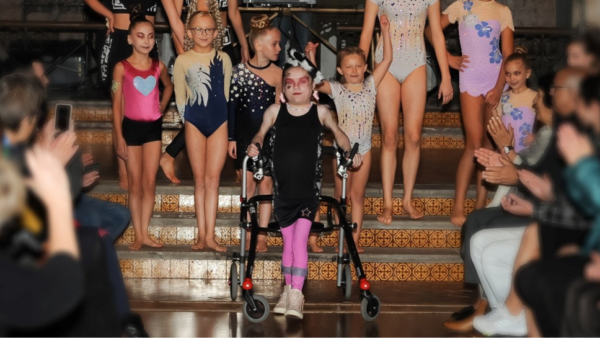Our condition-specific alert cards provide crucial information for emergency healthcare professionals treating patients with muscle wasting conditions.
LMNA-related congenital muscular dystrophy (L-CMD)
LMNA-related congenital muscular dystrophy (L-CMD) is a type of congenital muscular dystrophy, a group of genetic conditions that usually appear at birth or within the first few months of life.
L-CMD causes severe progressive muscle weakness, joint stiffness, and problems with the heart and breathing. Babies with L-CMD are often born with low muscle tone, which makes them seem ‘floppy’. Some people with L-CMD may need support with feeding and nutrition.
L-CMD is also part of a group of conditions called laminopathies, which happen due to changes in the LMNA gene. These conditions can affect the muscles, heart, or nerves.
A multi-disciplinary approach is important in not only managing the condition and symptoms but in improving wellbeing too. It involves different healthcare professionals working together. While there is currently no cure for L-CMD, management can make a big difference to quality of life.
Access to a healthcare team
It’s important to have access to a multi-disciplinary healthcare team, led by a neurologist, to review symptoms on a regular basis. A neurologist is a doctor who specialises in conditions that affect the muscles and nervous system.
Reviews should include monitoring heart and lung function, weight, muscle strength, bone health (e.g. vitamin D levels and supplementation), spine health (e.g. scoliosis), and joint range of movement. In some limited and specific cases, a specialist might consider a trial of medications currently in use for other muscle wasting conditions, like corticosteroids, to help manage symptoms.
Respiratory
Breathing muscles weaken over time, so early and frequent monitoring of respiratory function is important. This is typically done in clinic with spirometry, a lung function test, for children older than five years. Other tests, such as overnight sleep studies, may be needed to check breathing quality during sleep.
Flu vaccinations are strongly recommended to reduce the risk of chest infections. A weak cough is likely, and some may require regular antibiotics to prevent recurring chest infections, and a cough assist machine to help clear mucus and other secretions from the lungs.
Many children will need non-invasive ventilation (NIV), which is a small machine that delivers air pressure into the lungs through a mask over the face or nose. Some may need this for short periods at night, while others may need it more often. If breathing problems are severe, invasive ventilation may be considered, where a tube is placed in the windpipe. The most appropriate type of support should be discussed with a respiratory specialist.
Cardiac
Early and regular cardiac monitoring is essential, as heart problems are common in L-CMD and laminopathies. This is typically done by a specialist cardiologist, a doctor that diagnoses and treats heart problems. Several tests may be arranged at the time of diagnosis, including an electrocardiogram (ECG) and an echocardiogram (ECHO). Additional tests may be needed, such as advanced heart scans (e.g. cardiac MRI) and prolonged monitoring of heart rhythm using a Holter monitor. Cardiac follow up is usually scheduled at least annually. Some people may need a small device to track the heart’s activity, called a loop recorder. Depending on the severity, the cardiologist may recommend different medications, devices, or procedures to manage heart problems.
Feeding
Children may find it hard to eat enough orally to meet their nutritional needs, because of swallowing difficulties or lack of energy. A specialist dietitian can recommend nutritional supplements to provide optimal nutrition. For those with swallowing issues, a nasal or abdominal feeding tube may be necessary. These tubes can be placed through the nose or into the stomach through the wall of the abdomen.
Exercise and physiotherapy
Physiotherapy can help maintain breathing capacity, delay spine problems, and slow the progression of contractures. This includes exercises to strengthen muscles and stretches to maintain flexibility. Those on ventilators will also need daily respiratory physiotherapy to help clear their airways.
A physiotherapist is a healthcare professional who helps manage symptoms through movement, exercise, and manual therapy. They can put together a suitable exercise routine and identify a need for orthotics, which are devices like ankle splints that help support joint movement. Children will need support from caregivers to guide them through exercises and provide encouragement.

Author: Muscular Dystrophy UK
Reviewers: Prof Francesco Saverio Tedesco and Dr Mariacristina Scoto
Last reviewed: March 2025
Next review due: March 2028
We are here for you
Webinars, Information Days, and support groups for our muscle wasting community. Our life-changing support is here for you.
Advice for living with or caring for someone with a muscle wasting condition.

